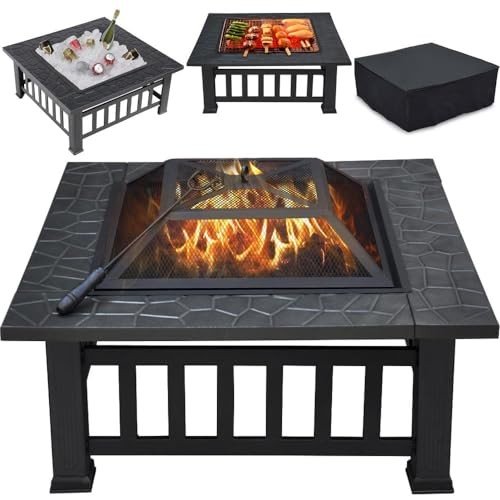The Fireplace: A Warm Embrace of Tradition and Comfort
Fireplaces have actually been an important part of human habitation for centuries, acting as a source of heat, a gathering location, and a sign of convenience. While the modern variations might differ extremely from their ancient ancestors, the allure of a fireplace withstands. Fireplaces UK out the numerous elements of fireplaces, including their history, function, types, and maintenance, while also attending to regularly asked questions.
The Evolution of Fireplaces
Fireplaces go back to ancient times when open flames were utilized for cooking, heating, and defense from wildlife. Over the centuries, fireplaces evolved from simple fire pits to the advanced renditions we see today. Here is a short timeline of their evolution:
- Prehistoric Era: Cavemen utilized open flames for warmth and cooking. Wind and smoke typically blew into houses.
- Middle Ages: Stone and brick fireplaces ended up being typical in homes and castles, incorporating chimneys to carry smoke outside.
- Renaissance: Elaborately developed mantels emerged, and fireplaces ended up being centers of social interaction.
- Industrial Revolution: Innovations in heating materials resulted in a variety of styles and performances.
- Modern Era: The introduction of gas, electric, and bioethanol fireplaces provided cleaner options to traditional wood-burning systems.
Table 1: The Evolution of Fireplaces
| Age | Attributes |
|---|---|
| Ancient Era | Open flames for heat and cooking |
| Middle Ages | Stone and brick structures with early chimneys |
| Renaissance | Elaborate mantels, social centers |
| Industrial Revolution | Diverse designs, advent of new products |
| Modern Era | Gas, electric, and bioethanol choices |
The Purpose of a Fireplace
Fireplaces serve double purposes: they offer physical warmth and produce an emotional environment. House owners often gather around the fireplace to bond, share stories, and delight in a cozy setting. The radiance of a fire can be calming, adding to a sense of relaxation and intimacy. Beyond individual enjoyment, fireplaces likewise offer practical advantages, including:
- Home Heating: Effective heat source, specifically in colder environments.
- Increased Home Value: A well-designed fireplace can improve the aesthetic value of a home.
- Emergency Heating: In case of power interruptions, wood-burning fireplaces can work as a crucial heat source.
- Visual Appeal: A focal point that adds to interior decor.
Types of Fireplaces
Today, fireplaces are available in numerous styles and fuel types, accommodating a varied series of choices and settings. Here are some common types:
Wood-Burning Fireplaces:
- Traditional fire pits
- Classic masonry fireplaces
- Need substantial maintenance and chimney upkeep
Gas Fireplaces:
- Available in both direct vent and ventless ranges
- Simpler to use and maintain than wood-burning fireplaces
- Supply instantaneous heat with a flick of a switch
Electric Fireplaces:
- Offer associated heat sources without real flames
- Often created to imitate traditional fireplaces
- Suitable for smaller sized areas and homes without a chimney
Bioethanol Fireplaces:
- Use bioethanol fuel, supplying a sustainable option
- Need no ventilation and can be put anywhere
- Safe and simple to keep
Table 2: Types of Fireplaces
| Type | Fuel Source | Functions | Maintenance Requirements |
|---|---|---|---|
| Wood-Burning | Wood | High ambiance, heat source | Regular chimney cleansing |
| Gas | Gas or gas | Instantaneous heat | Very little, periodic maintenance |
| Electric | Electrical energy | Easy setup | Really low upkeep |
| Bioethanol | Bioethanol fuel | Ventless, portable | Low, mainly cleaning up |
Upkeep and Safety Considerations
Owning a fireplace includes specific responsibilities, specifically regarding its safe operation and long-lasting upkeep. Here are very important upkeep ideas and security guidelines:
Maintenance Tips:
- Annual Inspection: Always have your chimney and fireplace inspected at least when a year by a certified specialist.
- Regular Cleaning: Clean out ashes and particles after each usage, and guarantee the flue is open before beginning a fire.
- Look for Cracks: Inspect masonry for cracks or damage to prevent structural problems.
- Usage Proper Fuel: Only usage dry, skilled wood for wood-burning fireplaces; do not burn treated wood.
Security Guidelines:
- Install Smoke Detectors: Ensure smoke detectors are functional, testing them monthly and changing batteries as required.
- Keep a Fire Extinguisher: Have one neighboring, even if a fireplace is utilized occasionally.
- Supervise Flames: Never leave a fire ignored, and ensure children and pets are monitored around the fireplace.
Regularly Asked Questions (FAQs)
1. How can I minimize smoke from a wood-burning fireplace?
To lessen smoke, usage dry, seasoned wood, and make sure that your chimney is clean and unobstructed.
2. Is it safe to utilize gas fireplaces during a gas leak?
Never use a gas fireplace throughout a gas leakage. Instantly evacuate the area and contact gas services for assistance.
3. Can I set up an electric fireplace myself?
Electric fireplaces are generally easy to install, however it is recommended to talk to professionals to make sure safety and compliance with regional building regulations.
4. What is the very best kind of fireplace for small areas?
Electric fireplaces or bioethanol models are typically best for small areas, as they do not require extensive ventilation or structural adjustments.
Fireplaces have transcended their initial function of providing heat to become cherished components of home design and family life. They stimulate memories of heat, celebrations, and togetherness while providing practical benefits that boost modern living. By comprehending the various kinds of fireplaces, their upkeep, and safety practices, house owners can enjoy the timeless appeal of this beloved function for generations to come.

